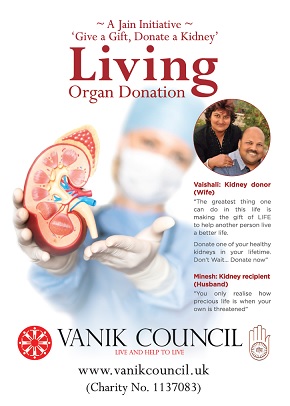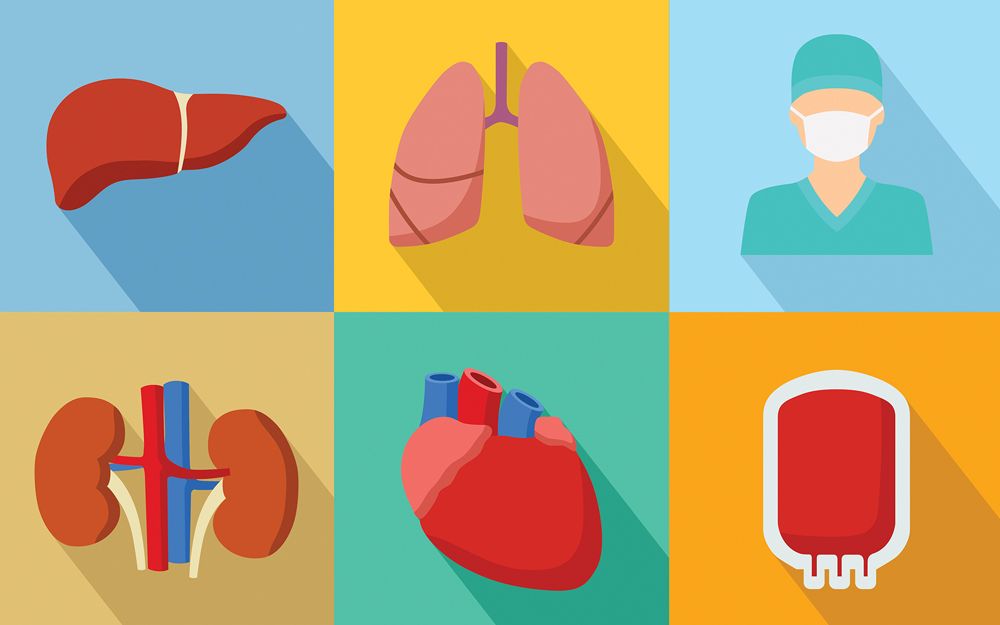Can I donate all of my organs before death?
Organs That Can Be Donated While Alive. You may be able to donate: One of your kidneys. A kidney is the most common donation. Your remaining kidney removes waste from the body. One liver lobe. Cells in the remaining lobe grow or refresh until your liver is almost its original size.
What organs can you donate without dying?
Most often, you donate organs once you’ve died. You can donate some organs while you’re alive. What organs can I donate after I die? Kidneys (2) Liver; Lungs (2) Heart; Pancreas; Intestines; Hands and Face; Get answers to your questions about donating after death. What organs can I donate while I’m alive? One kidney; One lung; A part of the liver
What are the most common organs to donate?
Jun 13, 2019 · The most frequently donated organ from a living donor is a kidney. A healthy person has two kidneys and can continue to live an active life with just one. Kidney donors must be the same blood type and be a similar size and weight of the recipient.
Which organs and tissues can be donated after death?
Apr 28, 2021 · Healthy people can do just fine with a single kidney. And after a piece of the liver is removed, the organ will regenerate itself — in both the donor and the recipient — within six to 12 weeks, says Dr. Kiran Bambha, a transplant hepatologist and medical director for the UW Living Donor Liver Transplant Program.

What organs can you donate while alive for money?
Organs That Can Be Donated While AliveOne of your kidneys. A kidney is the most common donation. ... One liver lobe. Cells in the remaining lobe grow or refresh until your liver is almost its original size. ... A lung or part of a lung, part of the pancreas, or part of the intestines. These organs don't regrow.Apr 20, 2021
Can I donate my heart if I'm still alive?
The heart must be donated by someone who is brain-dead but is still on life support. The donor heart must be in normal condition without disease and must be matched as closely as possible to your blood and /or tissue type to reduce the chance that your body will reject it.Apr 24, 2021
What organ can you live without and donate?
There are many organs one can theoretically do without, or for which there's a backup. Most folks can spare a kidney, a portion of their liver, a lung, some intestines, and an eyeball, and still live a long life.Aug 29, 2013
Can I donate my cornea while alive?
For the most part, corneal donation comes from people who are dead. In very rare circumstances, a donor may be living. For example a patient who has an ocular tumor in the back of the eye may be able to donate the eye at the time the eye is removed.
What body fluids can you donate?
Here are five bodily fluids you can sell.Plasma. Plasma is probably the simplest, least questionable bodily fluid you can sell. ... Sperm. For a young guy who lacks money, sperm donation can seem like the ultimate gig. ... Eggs. I really don't know if eggs are a liquid or not. ... Breast Milk. ... Urine.Oct 28, 2014
What are the 5 vital organs?
The heart, lungs, kidneys, liver, and spleen are knows as vital organs, and can be impacted by cancer and its associated treatments. The following links provide information about the late effects of children's cancer treatment to these vital organs.
What is the most useless organ?
AppendixAppendix. The appendix is perhaps the most widely known vestigial organ in the human body of today. If you've never seen one, the appendix is a small, pouch-like tube of tissue that juts off the large intestine where the small and large intestines connect.May 3, 2019
Can eyes be donated after death?
The good news is that almost everyone can donate their eyes or corneas after their death. Eye donors can have any eye colour, blood type or level of eyesight. Donor age is not as important as it is for other organs or tissues – most eye donors are in their 70s.
Can I donate my heart before death?
No money can be involved in the process of organ donation. The organs that can be donated while a person is alive are either a kidney or a part of a lung, tissues, skin, bone, heart valve, and cornea. Dr.Nov 26, 2017
Can you live without a heart?
A device called the Total Artificial Heart helps some of the sickest heart-failure patients regain function — outside of the hospital — while awaiting a transplant.Sep 6, 2016
How many lives can you save by giving organs?
The list of organs and tissues that you can donate continues to grow. You can save up to eight lives and improve over 75 more. Most often, you donate organs once you’ve died. You can donate some organs while you’re alive.
How long after death can you donate corneas?
Doctors can remove and store corneas several hours after death. They can do the corneal transplant three to five days after donation. . Donated tissues enhance the quality of life for the people who receive them.
Why do corneas get damaged?
Damaged corneas can result from eye disease, injury, or birth defects. More than 97% of all corneal transplants restore the receiving patient’s vision. Corneal donors don't have to "match" receiving patients like organ donors do. Donors are universal. Age, eye color, and the quality of your eyesight don’t matter.
What tissue is used to make blood cells?
Bone marrow: This soft tissue is inside your bones. It produces many blood cells. Doctors remove it to get stem cells. Cord blood stem cells: The blood in the cord that connects a newborn to the mother during pregnancy has high levels of blood stem cells. Doctors can collect and store these in freezers for a long time.
When can I donate stem cells?
If you’re healthy and between age 18 and 60, you can donate blood stem cells. It’s best when the donor and the receiving patient’s tissue type or human leukocyte antigen (HLA) match. It’s easier to find a match in the same family or in the same racial or ethnic group.
Can you donate corneas?
You can donate your cornea when you sign up as an organ, eye, and tissue donor. This lets you leave behind the gift of sight. In 2018, doctors performed over 85,000 corneal transplants. The cornea is the clear part of the eye over the iris and pupil. Damaged corneas can result from eye disease, injury, or birth defects.
How many people are waiting for organ transplants?
Every 10 minutes another name is added to the list of more than 113,000 people currently waiting for an organ transplant in the United States. The names on the list include infants, toddlers, teens, parents and grandparents who all need an incredible gift in order to live.
How old do you have to be to donate a kidney?
A living donor needs to be between the ages of 18 and 60 and in good health. Care is given to be sure there will be no adverse physical, psychological or emotional issues with the donation. The transplant center evaluates a donor to determine emotional fitness, physical health, and compatibility.
How long can a kidney be preserved?
Kidney donors must be the same blood type and be a similar size and weight of the recipient. A kidney can be preserved outside of the body for up to 36 hours making it easy to transport if necessary.
Can you donate organs while you are alive?
Although most organ and tissue donations occur after the donor has died, there are some organs and tissues that can be donated while the donor is alive. About four out of every ten donations are living donations. The most frequently donated organ from a living donor is a kidney. A healthy person has two kidneys and can continue to live an active ...
Is Gift of Hope a non profit organization?
Gift of Hope is a not-for-profit organ procurement organization that is dedicated to arranging organ and tissue donation for the 12 million people who live in Illinois and northwest Indiana. This region is one of the busiest in the nation with 9 transplant centers that offer 34 transplant programs.

Popular Posts:
- 1. where to donate hospital bed
- 2. how to donate money in robloxian high school
- 3. how am i ineligible to donate blood
- 4. how to donate organs after death
- 5. where to donate a mattress near me
- 6. how much blood can you safely donate
- 7. where to donate vhs tapes in nj
- 8. where to donate clothes in chicago
- 9. where to donate to those affected by the hurrican in puerto rico
- 10. how much did watt donate